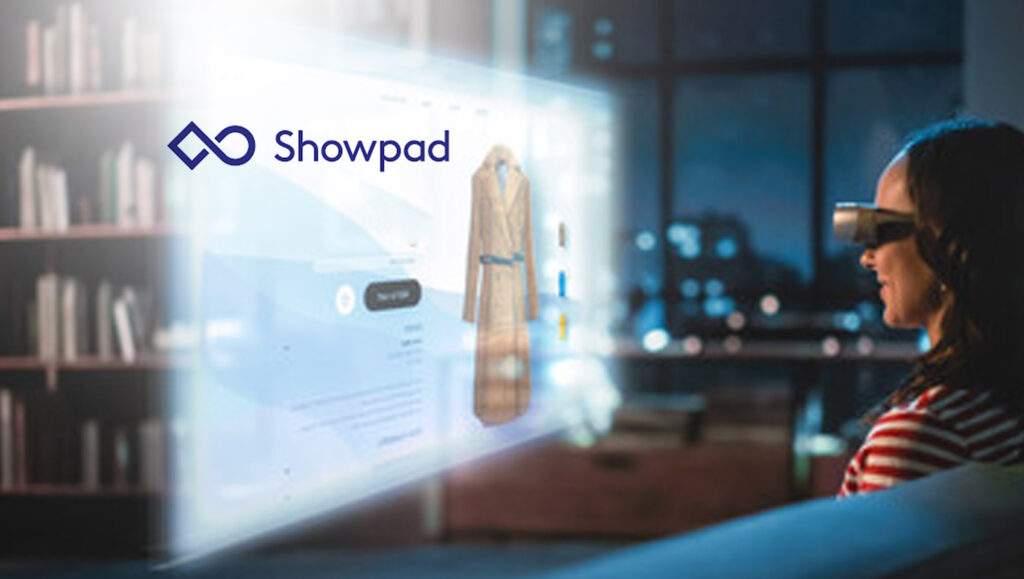Showpad’s State of Selling Survey reveals that virtual deals have overtaken face-to-face buying since the onset of the pandemic; organizations need to consider digital-first methods
Showpad, the global leader in sales enablement technology, has released the first round of findings from its State of Selling Survey, which analyzed U.S. organizations and found that 86% of buyers now prefer to be sold to virtually, forgoing traditional face-to-face sales meetings. Interestingly, when it comes to millennial and Gen Z buyers, 92% prefer virtual selling. As such, traditional ‘sales meetings’ are rapidly becoming a thing of the past and organizations need to rethink how they sell to prospects.
Even amongst those who are responsible for more than $12M in purchases a year for their business, 69% say there is now no need for the traditional ‘face-to-face’ meeting with a sales representative.
As the opportunities for in-person meetings declines, other sales channels have grown in popularity. In the past year, 32% of business buyers have made purchases through virtual meetings and 17% have made purchases through virtual or in-person, while 51% purchased through in-person meetings.
Read More: SalesTechStar Interview With Hendrik Isebaert, CEO of Showpad
B2C purchasing trends are shaping the B2B market
According to the findings, more than half (59%) have made a business purchase after receiving a presentation or demo in the Metaverse or with augmented reality. Meanwhile 21% say they have not, but would be interested to do so, showing that overall, eight in ten buyers are using, or open to using, these technologies.
Social media (SM) platforms are also playing an ever-increasing role in business sales. More than two-thirds of buyers (70%) say they have purchased something for their company after seeing it on social media – 50% of all respondents purchased after seeing a video of it. Social media is so ingrained in the buyer lifestyle that amongst those who have purchased a product after seeing it on SM, more than one-third (33%) did so in the past month.
Of the social channels that are enabling business sales, the research has revealed that professional networks are falling behind consumer-led platforms for purchases; Facebook (69%), Instagram (57%) and YouTube (48%) are the platforms used most frequently to make business purchases, while LinkedIn lags at 26%.
This increasing importance of social media in B2B sales is only set to grow – more than three quarters of buyers (77%) expect the role of social media in sales to increase over the next five years. In fact, those surveyed expect 28% of all purchases will be made through either social media, the Metaverse, or with the aid of augmented reality within the next five years.
There’s still value in face-to-face selling
While the nature of sales is shifting quickly, the survey suggests that salespeople still have innate value in face-to-face selling and their roles will never be redundant in an organization. This is most pronounced in a specific cohort of major industries, where buyers were more likely to buy products after an in-person meeting than a virtual meeting: manufacturing and engineering (60%), technology (64%), construction (57%) and insurance (50%). Overall, more than half of buyers (66%) say they like to see physical products before buying them and 34% prefer an in-person demo in their office.
Read More: New Report Shows Remote Work Continues to Accelerate Cloud Adoption and Collaboration
Drawbacks of some traditional sales tactics
The research suggests that, for many buyers, technology appears a more attractive option than meeting sales representatives, with buyers saying that those in traditional sales roles meet their needs less than half the time (55%). Just 5% of those surveyed state that their sales representatives always meet their needs, suggesting that businesses are increasingly looking to technology to fill an important gap in the sales funnel.
Business buyers highlighted many frustrations with the traditional tactics associated with salespeople. When it comes to the most frequent irritations, 48% highlighted issues with persistent sellers not taking ‘no’ for an answer even once it’s been made clear they are not interested, persistent calls and messages (47%) and hassling after a presentation (31%). Interestingly, 27% pointed to salespeople not knowing their products and 24% highlighted that salespeople just send too much information over.
In terms of dealbreakers in sales practices, 47% highlighted that if a seller was just following a script or appeared distracted (41%) they wouldn’t proceed with the purchase. When it comes to virtual sales calls, having a messy or untidy background (27%), walking away from the screen during the sales presentation, (22%) or not making a connection over video (18%) were off-putting for buyers.
“The sales rep is a quintessential part of the business and sales and revenue generation will always be the heart of a company. However, the role of salespeople must evolve to meet buyer needs,” said Hendrik Isebaert, CEO of Showpad. “While there will always be space for face-to-face selling, in today’s hybrid working environment, buyers are gravitating more and more toward virtual buying and sales reps need to equip themselves with the right tools to keep up. Modern selling needs to be tailored and buyer-led to deliver optimal buyer experiences and lead to greater conversion rates.”





















